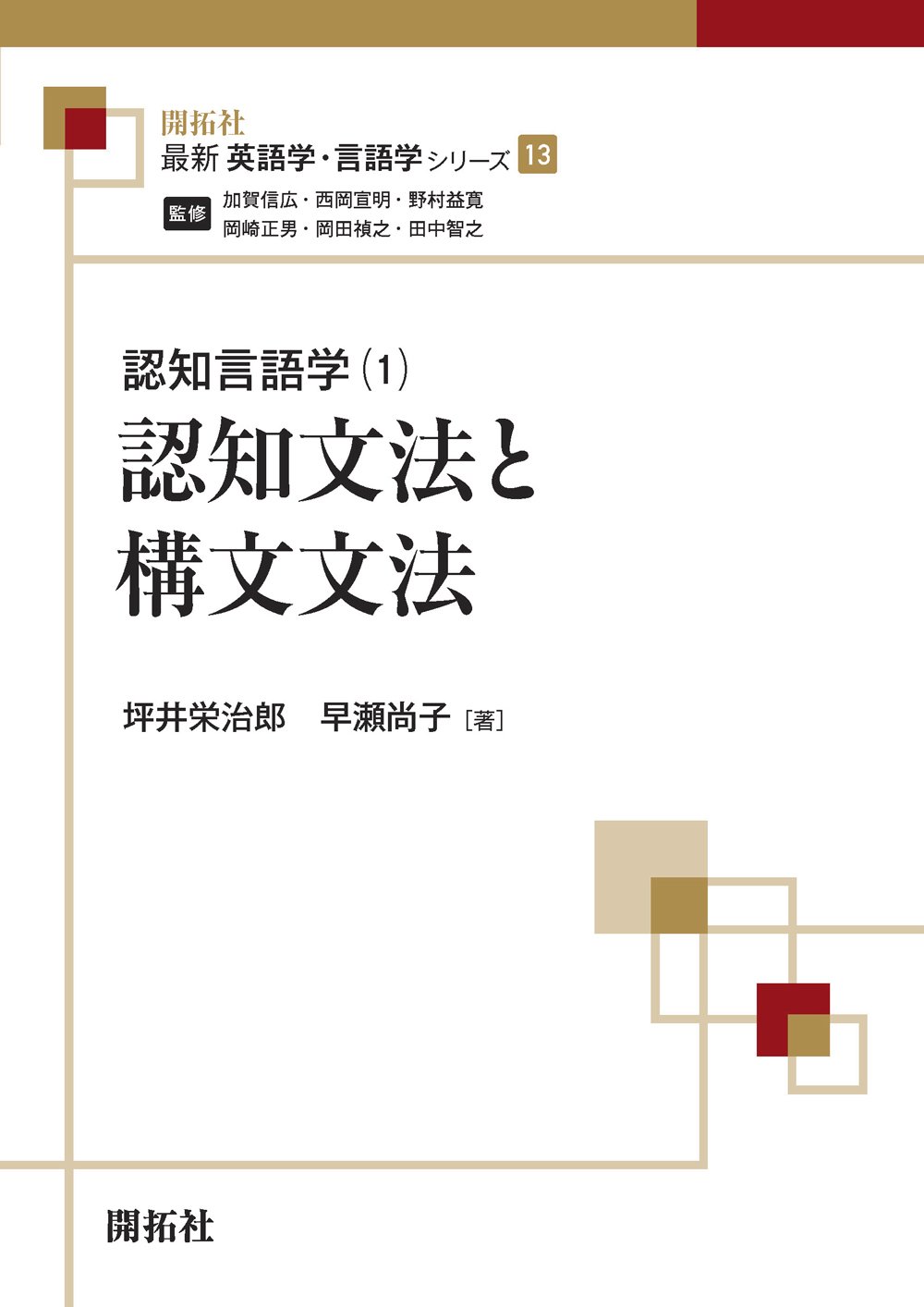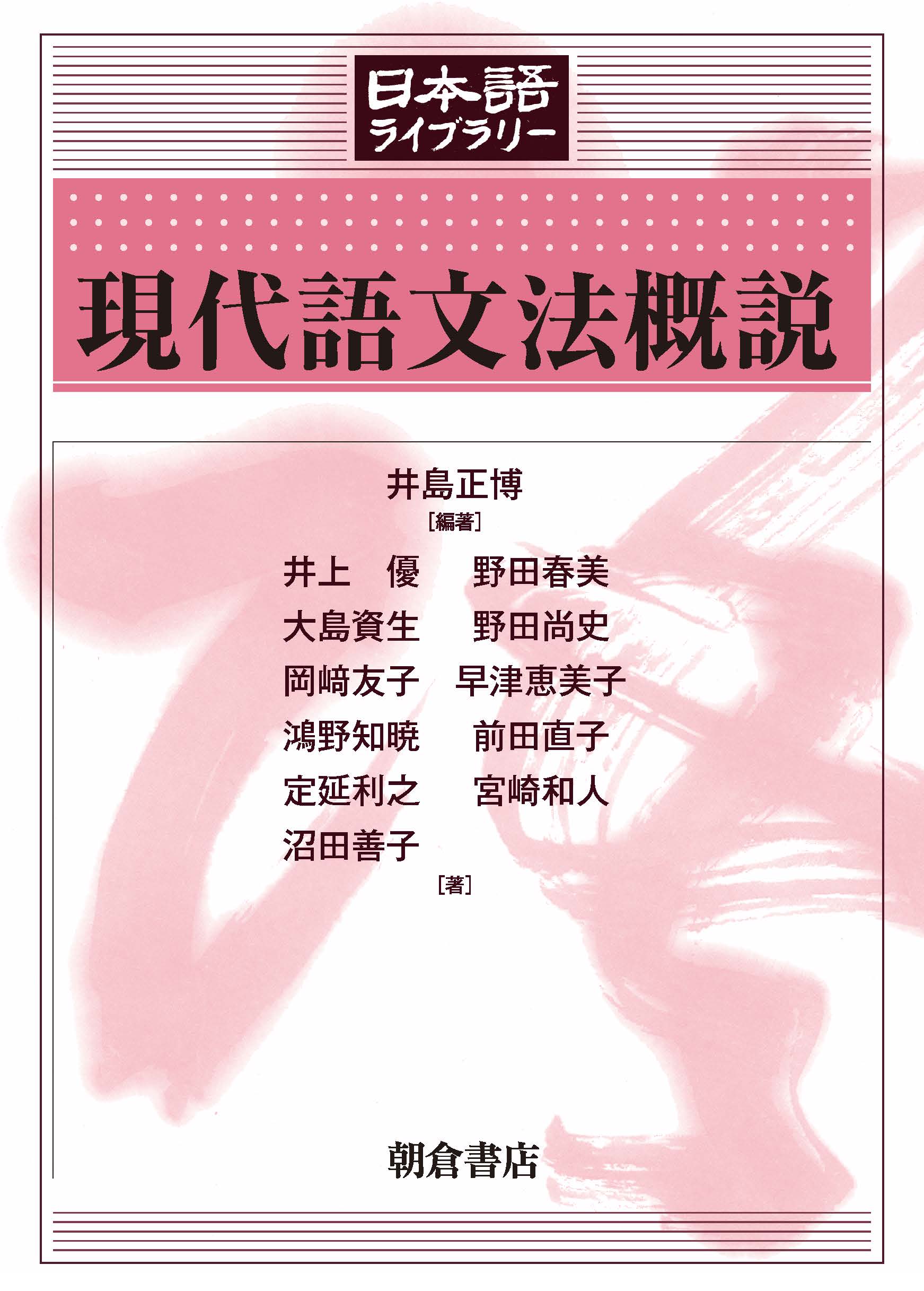
Title
Current Trends in English Linguistics and General Linguistics 13 Ninchigengogaku (1): Ninchibunpou to Koubunbunpou (Cognitive Linguistics [1]: Cognitive Grammar and Constructional Approaches)
Size
296 pages, A5 format
Language
Japanese
Released
November 28, 2020
ISBN
978-4-7589-1413-0
Published by
Kaitakusha
Book Info
See Book Availability at Library
Japanese Page
This is one of an ongoing series of books planned to provide a survey of current trends in theoretical linguistics. The first half, written by the author of this article and very briefly reviewed here, is devoted to an explication of Cognitive Grammar, and the second half surveys the emergence and development of construction grammar, which together constitute the two major theories of grammar in cognitive linguistics.
Although it is just one line of research in linguistics that constitutes a major branch of cognitive science, cognitive linguistics is so named because of its emphasis on the relevance and importance of general cognition as a basis of language, which is explicitly denied in the mainstream Chomskyan generative grammar. One of the basic features of human cognition is the cognitive agent’s active and flexible organization and categorization of the external world, which language provides myriad ways of doing via conventionalized meanings of linguistic expressions. Cognitive linguistics thus generally assigns an essential role to semantics, and constructional approaches in particular implement this idea by giving form-meaning pairings, i.e., constructions, a privileged role as the basic units of grammar and the description thereof.
As a theory assuming the fundamental status of form-meaning pairings in grammar, Cognitive Grammar belongs among constructional approaches, but it stands out for its firm commitment to reducing grammar to independently motivated and widely accepted basic cognitive principles and processes, which in many ways makes it distinct from and opposed to other constructional approaches. The critical examination of Goldberg’s Construction Grammar and Croft’s Radical Construction Grammar in Chapter 9 brings into sharp relief the unique features and significance of Cognitive Grammar.
Although each chapter deals with specific topics named in its title, the overall purpose of the first part of the book is to show the necessity and advantages of the framework of Cognitive Grammar, which authors sometimes seem to refer to without necessarily understanding what it is all about. I hope that my contribution to this series places Cognitive Grammar in proper perspective in the current linguistics scene, and serves as a token of respect and a commendation for the achievements attained over the past 40 years by Ronald W. Langacker, who built and developed the theory almost single-handedly.
(Written by TSUBOI Eijiro, Professor, Graduate School of Arts and Sciences / 2021)



 Find a book
Find a book




